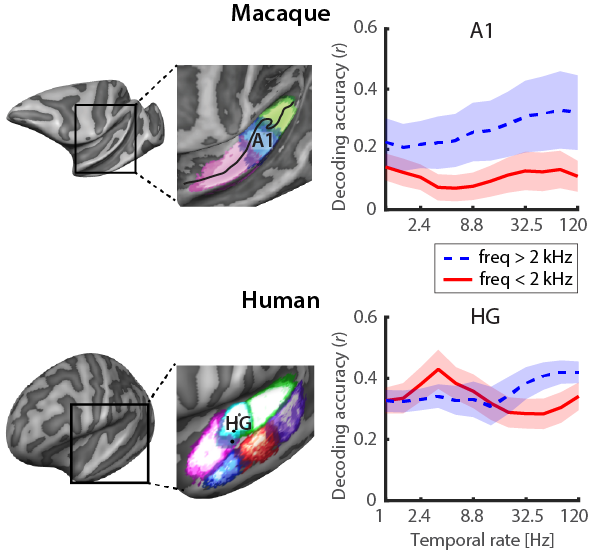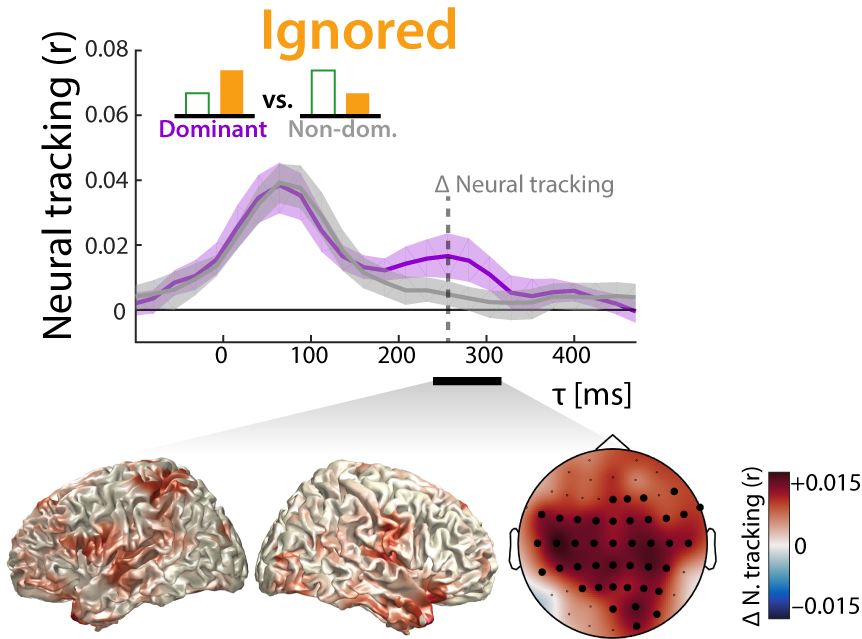Obleserlab postdoc Jens Kreitewolf is in press in The Journal of the Acoustical Society of America!
Together with our colleagues, Marc Schönwiesner (Montreal/Leipzig), Samuel Mathias (Yale), and Régis Trapeau (Montreal/Marseille), we investigated the roles of two of the most salient voice features, glottal-pulse rate (GPR) and vocal-tract length (VTL), for perceptual grouping in the cocktail party. Using carefully controlled stimuli, we show that listeners exploit continuity in both voice features to solve the cocktail-party problem, but that VTL continuity plays a stronger role for perceptual grouping than GPR continuity. Our findings are in line with the differential importance of VTL and GPR for the identification of natural talkers and have clinically relevant implications for cocktail-party listening in cochlear-implant users.
Data were recorded using the Dome at BRAMS during Jens’ ACN Erasmus Mundus exchange in Montreal.
The paper is available as preprint:
https://www.biorxiv.org/content/early/2018/07/30/379545






